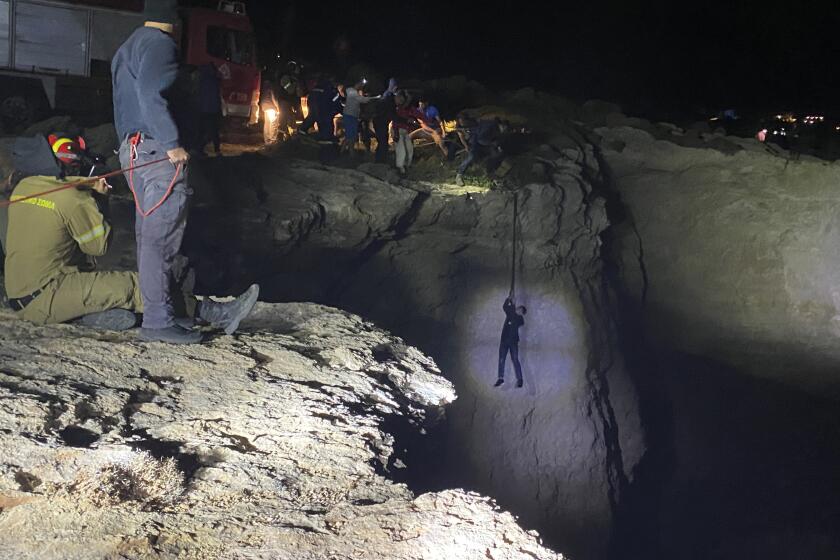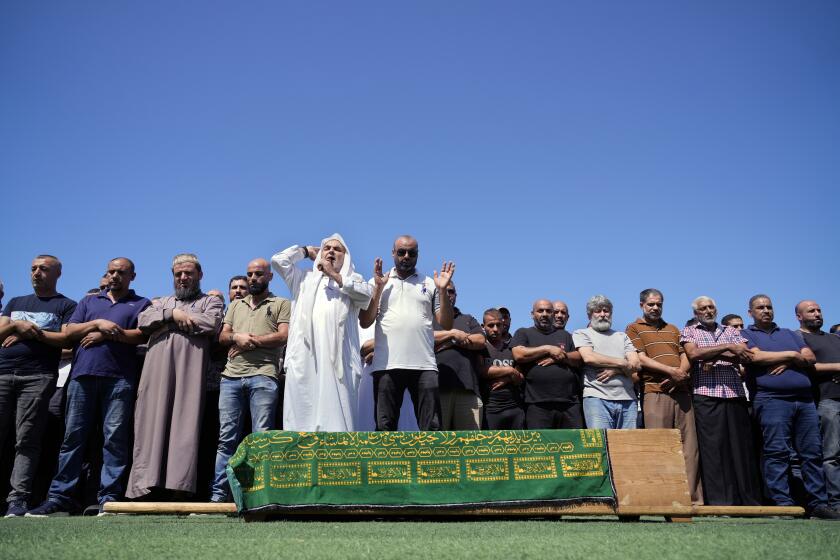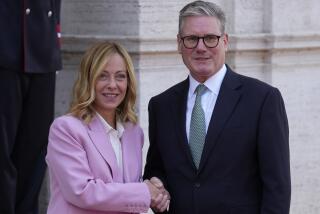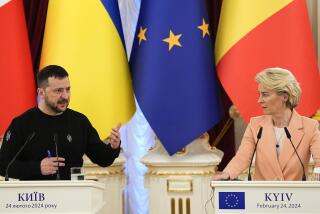10 years after EUâs ânever againâ tragedy that killed 300 migrants, little has changed
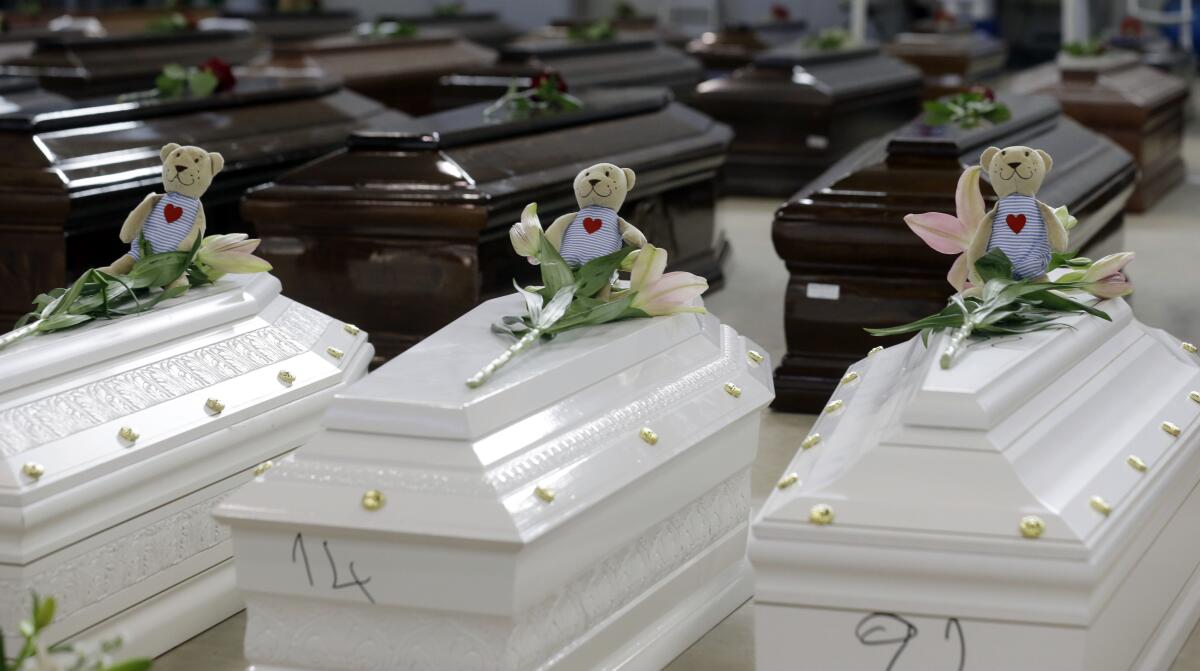
BRUSSELS â Ten years ago, the head of the European Unionâs executive branch stood, visibly shaken, before rows of coffins of migrants who drowned off the Italian island of Lampedusa. Some of them, small and bone-white, contained the bodies of infants and other children.
âThat image of hundreds of coffins will never get out of my mind. It is something I think one cannot forget. Coffins of babies, coffins with the mother and the child that was born just at that moment,â Jose Manuel Barroso, then president of the European Commission, said in 2013.
More than 300 people died Oct. 3, 2013, after a fire broke out on a fishing boat that had set off from Libya on the worldâs deadliest migration route. The boat, which carried about 500 people seeking better lives in Europe, capsized only hundreds of yards from shore.
âThe kind of tragedy we have witnessed here so close to the coast should never happen again,â Barroso said. The EU must boost âour surveillance system to track boats, so that we can launch a rescue operation and bring people back to safe grounds before they perish,â he added.
Nothing of the sort will be considered by EU leaders at a summit next week. Indeed, almost a decade on, little has improved.
About 330,000 attempts were made to enter Europe without authorization in 2022 â a six-year high. The International Organization for Migration says more than 25,000 people have died or gone missing trying to cross the Mediterranean Sea since 2014.
Two boats carrying migrants sank in Greek waters, sparking a dramatic rescue operation that involved hauling stranded people up steep cliffs.
The search-and-rescue mission launched in response to the Lampedusa tragedy was shut down a year later over concern that the Italian navy ships only encouraged people to set out in the hope of being plucked from the sea.
Civilian boats run by charities have been hounded and impounded by governments for trying to save lives. The EU provides vessels and equipment to the Libyan coast guard to prevent people leaving, and Turkey and several other northern African countries get financial support.
At their Feb. 9-10 summit, the EUâs 27 heads of state and government are set to renew a call to beef up borders and pressure the often-impoverished countries that people leave or cross to get to Europe, according to a draft statement prepared for the meeting, seen by the Associated Press.
The leaders will give âfull supportâ so that the border and coast guard agency Frontex can deliver âon its core task, which is to help Member States protect the external borders, fight cross-border crime and step up returnsâ â the EUâs euphemism for deportation.
The EU will âenhance cooperation with countries of origin and transit through mutually beneficial partnerships,â said the text, which could change before the summit. It did not list the ways the partnerships might be beneficial for those countries, only the means of persuasion that could be used on them.
The EUâs aid budget should be put to âthe best possible useâ to encourage countries to stop people leaving, it said. Those that donât accept their nationals back would find it harder to get European visas. Bangladesh, Gambia, Iraq and Senegal are already being monitored.
After a meeting last week of interior ministers, the EUâs Swedish presidency said that âboth positive incentives and restrictive measures are required. We must make use of all relevant policy areas in this regard, such as visa policy, development cooperation, trade and diplomatic relations.â
Thousands of Palestinians have held prayers in Lebanon for one of the scores of migrants who lost their lives when their boat sank off Syriaâs coast.
Border fences are back on the table, even though the European Commission previously declined to help member countries pay for them, arguing they were not in line with âEuropean values.â Several EU countries, notably Hungary, Austria and Slovenia, have erected border fences after well over 1 million migrants entered Europe in 2015, most of them war refugees from Syria and Iraq.
A Dutch government position paper circulating in Brussels said that âall types of stationary and mobile infrastructure should be part of a broader package of border management measures, while guaranteeing fundamental rights as enshrined in EU and international law.â
The land border between EU member Bulgaria and Turkey, from where many migrants set out, is of particular concern. Asked about it Thursday, Home Affairs Commissioner Ylva Johansson said only that there isnât enough money to help countries build fences.
The commission wants to speed up asylum processing at the blocâs borders and has named a âreturns coordinatorâ to expedite deportation. More than 900,000 people applied for EU asylum last year, sparking a border backlog.
In a letter to the leaders, President Ursula von der Leyen said that pilot testing will be done in coming months on âan accelerated border procedure,â including the âimmediate returnâ of those not permitted to stay.
This âFortress Europeâ approach has evolved because of the EUâs failure to agree on the answer to a vexing question: Who should take responsibility for migrants and refugees arriving in Europe, and should other members be obliged to help?
The question has rarely arisen over the last year as millions of Ukrainian refugees were welcomed into Europe amid an outpouring of goodwill, notably from countries such as Hungary or Poland that are staunchly opposed to helping take care of migrants from Africa or the Middle East.
The commissionâs Pact on Migration and Asylum, unveiled in 2020, was supposed to resolve the problem but little progress has been made. Now, EU officials say that members might endorse the reform plan before the 2024 elections usher in another commission.
More to Read
Sign up for Essential California
The most important California stories and recommendations in your inbox every morning.
You may occasionally receive promotional content from the Los Angeles Times.
